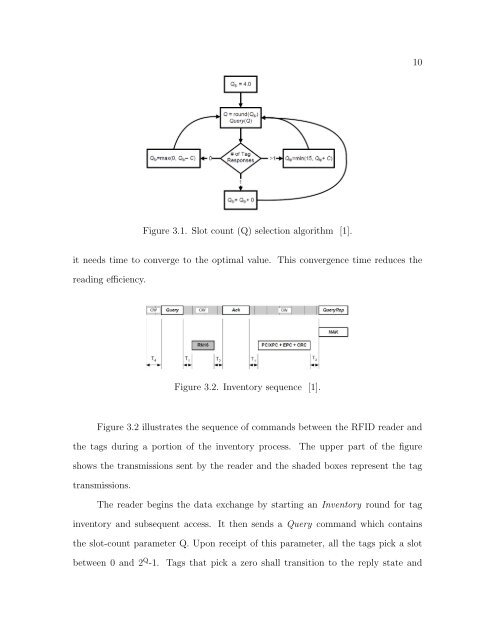utilizing physical layer information to improve rfid tag
utilizing physical layer information to improve rfid tag
utilizing physical layer information to improve rfid tag
You also want an ePaper? Increase the reach of your titles
YUMPU automatically turns print PDFs into web optimized ePapers that Google loves.
Figure 3.1. Slot count (Q) selection algorithm [1].<br />
it needs time <strong>to</strong> converge <strong>to</strong> the optimal value. This convergence time reduces the<br />
reading efficiency.<br />
Figure 3.2. Inven<strong>to</strong>ry sequence [1].<br />
Figure 3.2 illustrates the sequence of commands between the RFID reader and<br />
the <strong>tag</strong>s during a portion of the inven<strong>to</strong>ry process. The upper part of the figure<br />
shows the transmissions sent by the reader and the shaded boxes represent the <strong>tag</strong><br />
transmissions.<br />
The reader begins the data exchange by starting an Inven<strong>to</strong>ry round for <strong>tag</strong><br />
inven<strong>to</strong>ry and subsequent access. It then sends a Query command which contains<br />
the slot-count parameter Q. Upon receipt of this parameter, all the <strong>tag</strong>s pick a slot<br />
between 0 and 2 Q -1. Tags that pick a zero shall transition <strong>to</strong> the reply state and<br />
10
















